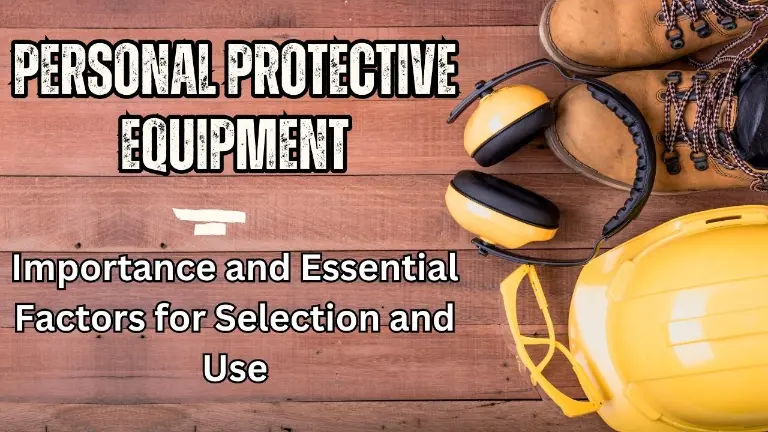In this blog post, we will discuss top 15 signs that shows your workplace safety lacking leadership support. We will also provide tips on how to address these issues and create a safer work environment for everyone.
1. Introduction: Top 15 Signs Your Workplace Safety Lacking Leadership Support:
In today’s competitive business world, it is more important than ever for companies to prioritize health and safety. Keeping your team safe isn’t just the right thing to do, but it can also save companies money in the long run by reducing accidents, injuries, and illnesses.
However, many workplaces still fall short when it comes to safety, and one of the most common reasons is a lack of leadership support.
Here are 15 key indicators that signal a lack of leadership support for workplace safety initiatives.
2. Top 15 Red Flags that Shows Lack of Senior Management Support for Workplace Safety:
2.1 Lack of Resources
One of the most obvious signs that your workplace safety is lacking leadership support is a lack of resources. This includes a lack of budget for personal protective equipment (PPE), safety training, and other essential resources. If your company is not willing to invest in the safety of its employees, it is sending a clear message that safety is not a priority.
2.2 No Visible Leadership
Another sign that your workplace safety is lacking leadership support is a lack of visible leadership. This means that senior leaders rarely discuss health and safety in meetings, newsletters, or other communications. When leaders do not talk about safety, it sends a message that it is not important.
2.3 Inadequate Training
Safety training is essential for all employees, regardless of their position or level of experience. However, many workplaces provide inadequate safety training, or no training at all. This can lead to employees not knowing how to work safely and putting themselves and others at risk.
2.4 Ignoring Concerns
When employees raise safety concerns, they should be taken seriously. However, in many workplaces, employees are ignored, dismissed, or even met with hostility when they raise concerns. This can create a culture of fear and silence, where employees are afraid to speak up about safety issues.
2.5 Absence of Safety Culture
A strong safety culture is essential for any workplace. This means that everyone in the organization, from top to bottom, is committed to safety. There is a continuous improvement in safety processes, and the organization encourages a proactive approach to identifying and mitigating risk.
2.6 Reactive Instead of Proactive
Many workplaces only address safety concerns after an incident occurs. This is a reactive approach to safety, and it is not effective. A proactive approach to safety means identifying and mitigating risks before they can cause harm.
2.7 Lack of Reporting Mechanism
Employees need to have a clear and easy way to report safety issues and near misses. This could be through a hotline, a website, or a designated safety representative. If employees do not have a way to report safety concerns, they are less likely to do so.
2.8 Inadequate Investigation of Incidents
When accidents do occur, they should be thoroughly investigated to understand the root causes and prevent recurrences. However, many workplaces do not conduct thorough investigations, or they do not take the necessary steps to address the root causes.
2.9 Lack of Regular Audits
Regular Safety Audits and reviews are essential for identifying safety hazards and ensuring that safety policies and procedures are being followed. However, many workplaces do not conduct regular audits, or they do not take the necessary steps to address the findings of the audits.
2.10 Inconsistent Enforcement
Safety rules and guidelines should be applied consistently to everyone in the organization. However, in many workplaces, safety rules are only enforced selectively, or they are not enforced at all. This can create confusion and resentment among employees.
2.11 No Dedicated Safety Personnel
In larger organizations, there should be a dedicated safety professional who is responsible for overseeing health and safety. This person should be qualified and experienced in safety, and they should have the authority to make changes to safety policies and procedures.
2.12 Performance Metrics
Safety performance should be considered in performance reviews and rewards. This will help to incentivize employees to work safely.
2.13 Poor Maintenance
Equipment, machinery, and facilities should be well maintained to prevent potential hazards. However, many workplaces do not properly maintain their equipment, which can lead to accidents and injuries.
2.14 Ineffective Communication
Safety policies, procedures, and updates should be effectively communicated to the workforce. This includes providing training, posting information on safety boards, and holding regular safety meetings.
2.15 High Turnover
A high rate of turnover in safety-critical roles can be a sign that there are problems with the safety culture in the workplace. This is because experienced employees are often the ones who are most likely to raise safety concerns and advocate for change.
3. What Action Can You Take?
If you are concerned that your workplace safety is lacking leadership support, there are a few things you can do:
3.1 Talk to Your Supervisor or Manager:
There might be a chance that Your Supervisor or Manager may not be aware of the problems, and they may be willing to take steps to address them.
3.2 Report safety concerns to the appropriate authorities:
This could include your safety representative, the health and safety committee, or the government occupational health and safety agency.
3.3 Join or start a safety committee:
This can be a great way to get involved in safety and make a difference in your workplace.
3.4 Get involved with your union:
Unions can play a strong role in advocating for safety in the workplace.
3.5 Look for another job:
If you are not comfortable working in a safety-critical environment, you may want to consider finding another job.
4. Creating a Safer Workplace:
Creating a safer workplace is a shared responsibility. Everyone in the organization, from top to bottom, has a role to play. By working together, we can create a safer work environment for everyone.
Here are a few tips for creating a safer workplace:
4.1 Make safety a priority:
Safety should be a core value of the organization, and it should be integrated into everything we do.
4.2 Provide adequate resources:
This includes funding for safety training, personal protective equipment (PPE), and other essential resources.
4.3 Lead by example:
Leaders should set the tone for safety by following safety rules and procedures themselves.
4.4 Communicate effectively:
Safety policies, procedures, and updates should be effectively communicated to the workforce.
4.5 Provide training:
All employees should receive regular safety training that is relevant to their job duties.
4.6 Investigate incidents thoroughly:
When accidents occur, they should be thoroughly investigated to understand the root causes and prevent recurrences.
4.7 Conduct regular audits:
Regular safety audits and reviews are essential for identifying safety hazards and ensuring that safety policies and procedures are being followed.
4.8 Report safety concerns:
Employees should be encouraged to report safety concerns and near misses without fear of retaliation.
4.9 Provide feedback:
Employees should be given the opportunity to provide feedback on safety policies and procedures.
4.10 Celebrate successes:
Safety successes should be celebrated and recognized.
4.11 Continuous improvement:
Safety is a continuous process, and we should always be looking for ways to improve.
By working together, we can create a safer work environment for everyone.
5. Conclusion:
Workplace safety is a serious issue that should not be ignored. By recognizing the signs that your workplace safety is lacking leadership support, you can take steps to address the problem and create a safer work environment for everyone.
I hope this blog post has been informative. If you have any questions, please feel free to leave a comment below.
For future updates, suggestion and discussion, please connect with us on Facebook, Twitter & Linkedin.






